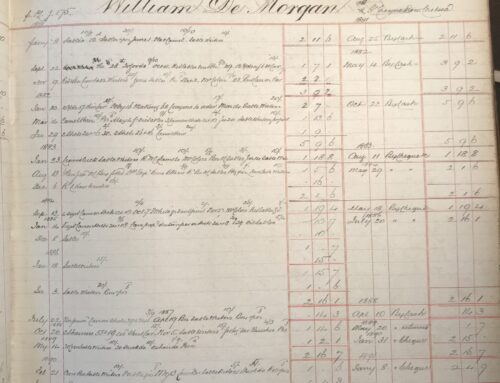By Sarah Hardy, Director of the De Morgan Museum
In January 2020, the country-music-turned-pop-icon Taylor Swift released her hit single ‘The Man’. In it she sings ‘I’m sick of running just as fast as I can, wondering if I’d get there quicker if I were a man’. This powerful commentary on gender inequality highlights the disparities in how men and women artists are treated in the music industry (and just in general). Through her lyrics, she addresses issues such as public perception and societal expectations of women and gender roles. This song serves as a platform for her feminist beliefs, addressing the gender-related challenges and injustices she and many others face.
When I heard the song I was immediately reminded of Evelyn De Morgan. You weren’t? Please read on, I’d like to try and convince you.
Like Swift, this Victorian artist had to work hard to prove her worth in a man’s world. She used her symbolic paintings to question inequalities during her own lifetime. Through paintings such as ‘The Captives’ she recognised the invisible yet harmful force of the patriarchy; in this picture it is malevolent dragons that are preventing women from rising up and leaving their captive state in the cave-like prison they are held in. The women are tormented by these intangible forces they cannot overcome.
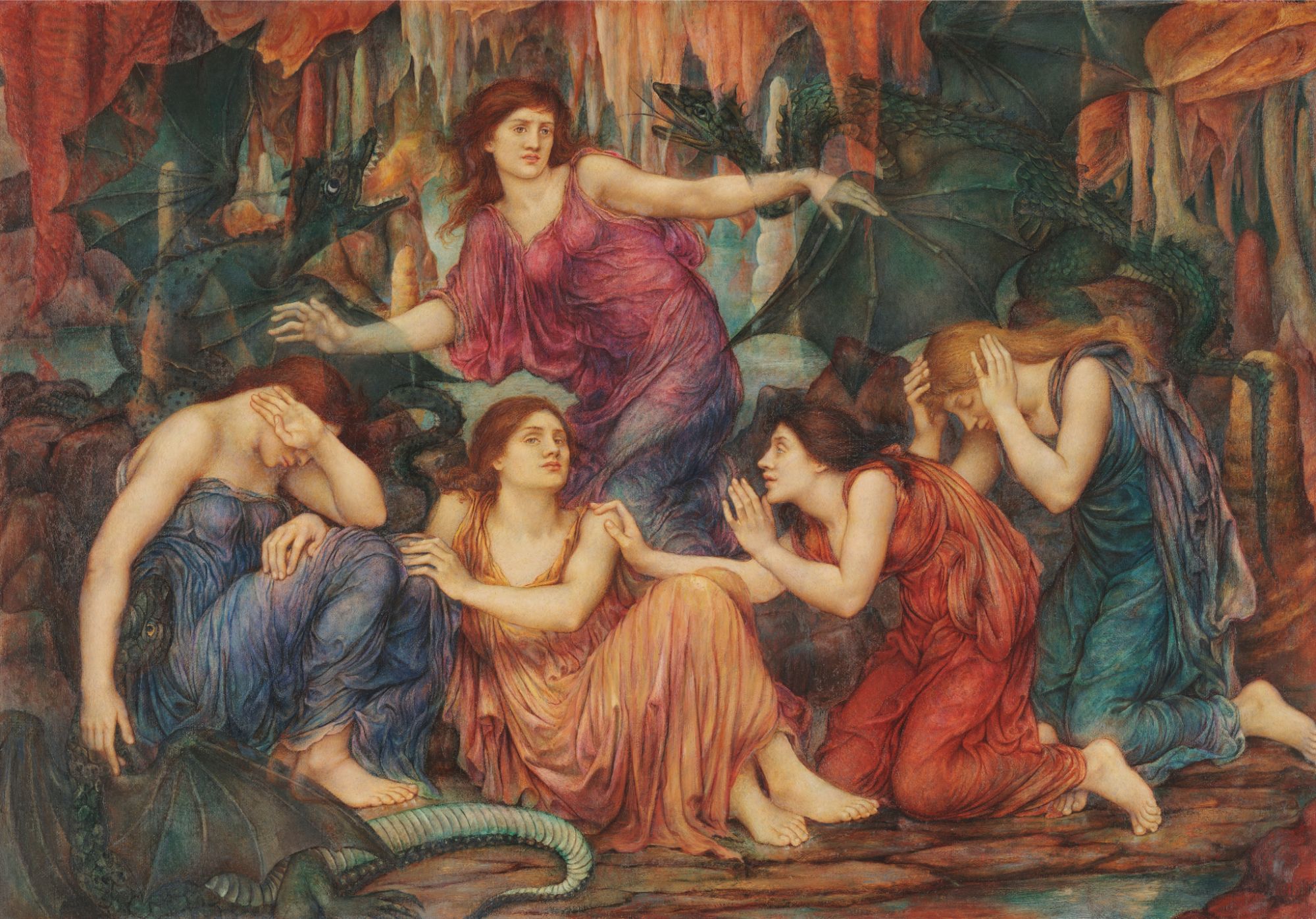
In 1889, Evelyn De Morgan signed the Declaration in Favour of Women’s Suffrage; a register of names of notable women who were committed to obtaining the vote for women. 100 years later in 1989, Taylor Swift was born. Although she was able to vote, the gender inequalities experienced by De Morgan a century earlier were still very much felt by this young female artist in the 21st century. Today only 5% of artworks on display at the National Gallery in London are by a female artist, and women represent less than 1/3 of artists in the music world today, with 12.6% of songwriters and fewer than 3% of producers that have been on the charts, between the years of 2012 and 2020 (musicianwave.com).
With the pressure to succeed and prove themselves being felt by these two female artists, they are separated only by the years, but very much united in their mission to use their art as a platform for change.
Today, Taylor Swift has released her album 1989 (Taylor’s Version). The ideas explored in this album very much resonate with the themes in Evelyn De Morgan’s artworks. To celebrate these two successful female artists, here is an alternative track listing for 1989. I hope it might bring Swift’s music and De Morgan’s artworks to those who admire one of these artists but perhaps haven’t heard of the other.
Could the seagulls simply be a coincidence? I personally don’t think so.
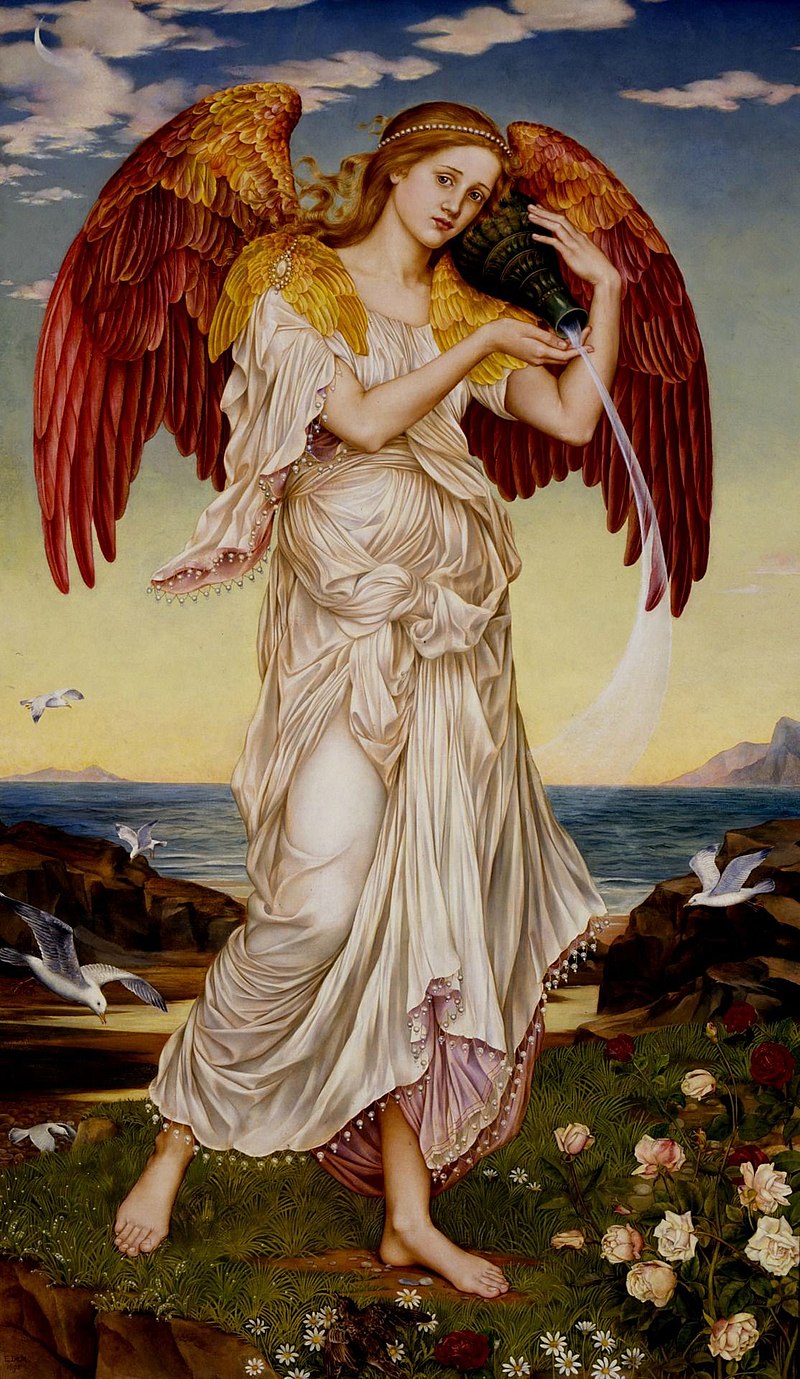
1. “Welcome to New York” by Taylor Swift and “Eos” (c.1895) by Evelyn De Morgan
A song that celebrates the excitement and optimism of starting a new chapter in life, in this case, Taylor’s move to New York City.
Eos is the mythical goddess of the dawn, representing the exciting new start of every day. Surrounded by seagulls, Eos pours the dew over the waking world. The picture resonates very strongly with Taylor’s seagull themed album cover for 1989. Seagulls represent cunning, perseverance, and freedom and so are perfect for Eos and for Taylor.
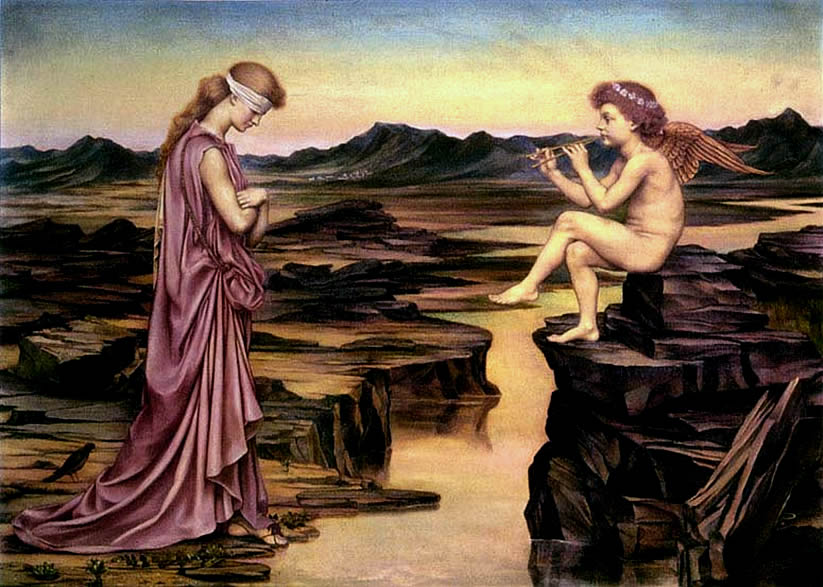
2. “Blank Space” by Taylor Swift and “Love The Misleader” (1889) by Evelyn De Morgan
“Blank Space” explores the complexities of love, showcasing the idea that love can sometimes be tumultuous and unpredictable.
The sound of love can be sweet, but it can blind you to its dangers. These are illustrated literally as the dangerous waters the blindfolded woman is lured towards as she listens to love’s music.
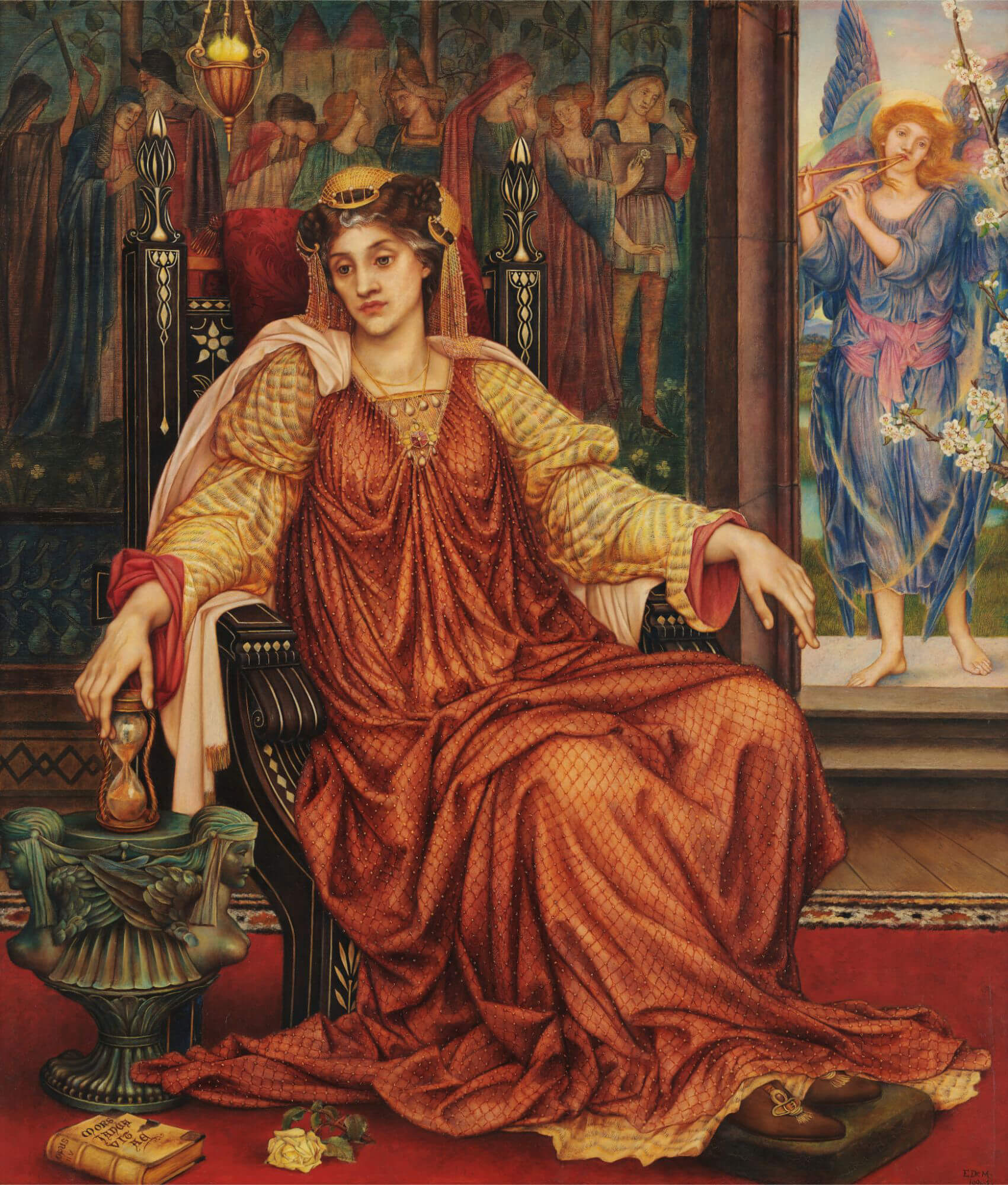
3. “Style” by Taylor Swift and “The Hour Glass” (1905) by Evelyn De Morgan
This song reminisces about a past romance and its enduring allure, capturing the essence of a stylish and passionate relationship. Jane Morris sat for this painting – my did she have a tricky time in love. Married to William Morris but in a long affair with the artist Dante Gabriel Rossetti. De Morgan paints her here as a wistful old women looking back over the romances of her past.
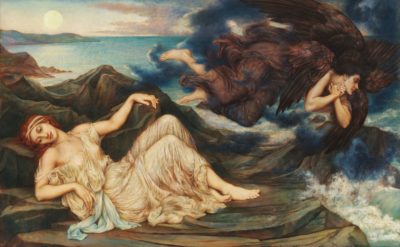
4. “Out of the Woods” by Taylor Swift and “Port After Stormy Seas” (1905) by Evelyn De Morgan
Taylor reflects on a challenging relationship, emphasising the idea of facing uncertainty and overcoming obstacles together.
As the cloaked figure in black robes flies away in De Morgan’s painting, the young woman can finally rest. After the turbulence of the sea, she is relieved to be back in port. Or, she is out of the woods and in the clear. Good.
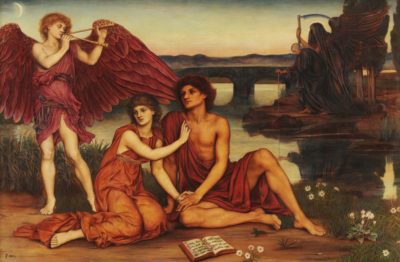
5. “All You Had To Do Was Stay” by Taylor Swift and “Love’s Passing” (1883) by Evelyn De Morgan
“All You Had To Do Was Stay” discusses a past relationship where the other person’s commitment was needed but not given. Although they are together and listening to the music of love, the young woman suspects that this relationship may not last. Behind her is a premonition of her being alone with the angel of death.
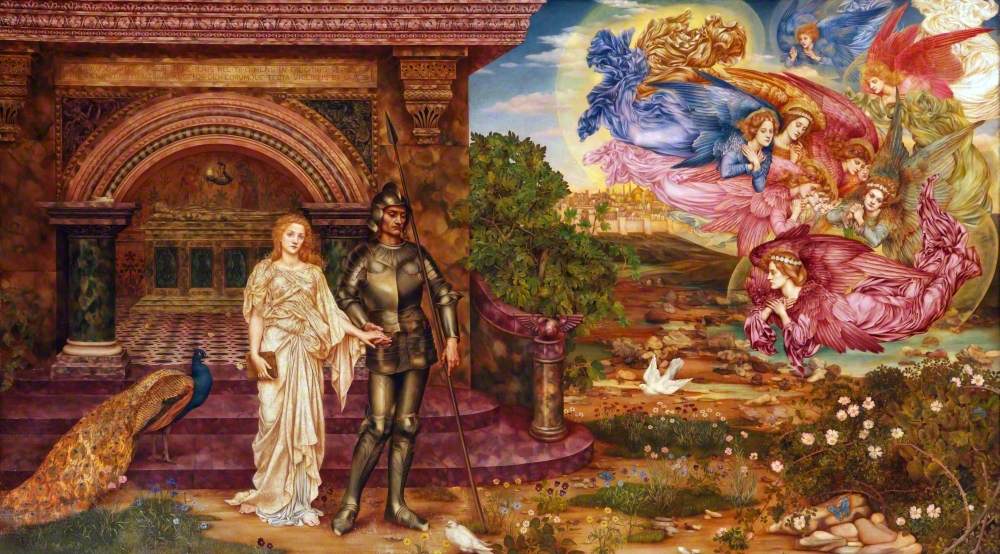
6. “Shake It Off” by Taylor Swift and “Life and Thought” (1901) by Evelyn De Morgan
This upbeat anthem conveys a message of self-empowerment and resilience in the face of criticism and negativity. The older, famous (and obviously more male) artist Edward Burne-Jones criticised this picture by De Morgan, saying that he didn’t think she could paint figures. De Morgan probably shook this off when the Walker Art Gallery bought the painting to proudly display in their Liverpool gallery where it still hangs today. It depicts a glorious rebirth for life and thought after a turbulent life – the perfect subject for this painting.
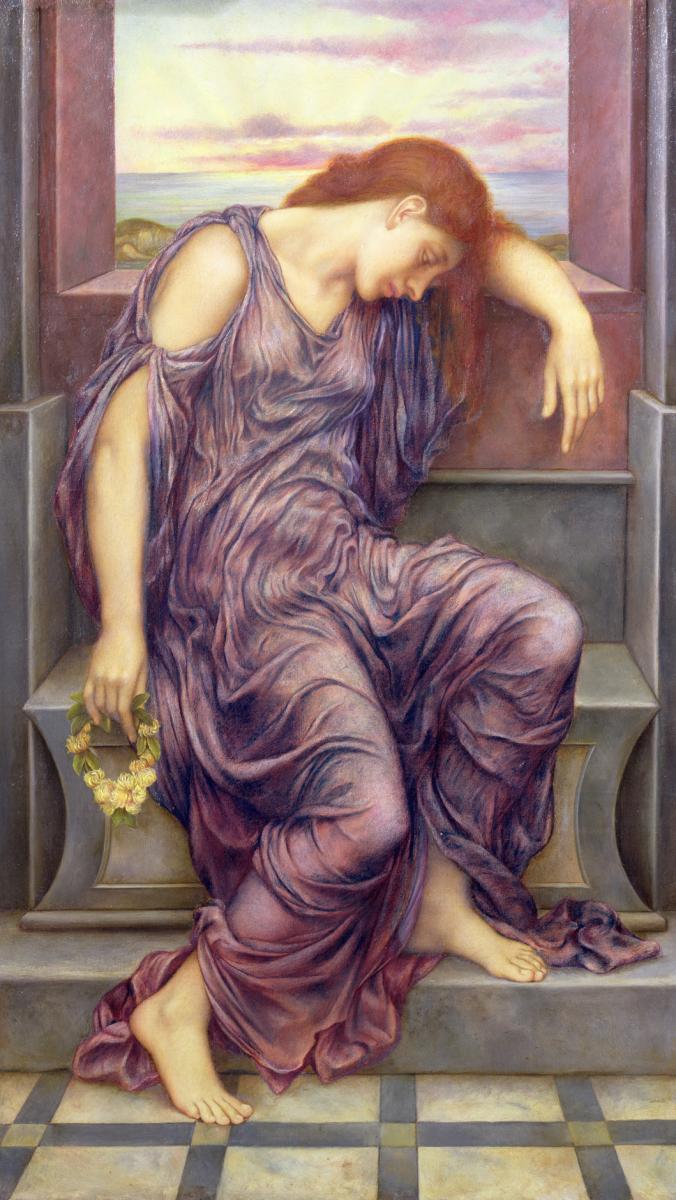
7. “I Wish You Would” by Taylor Swift and “In Memoriam” (c. 1890) by Evelyn De Morgan
The song explores themes of nostalgia, regret, and the yearning for reconciliation in a past relationship. The lyrics convey a sense of longing for a lost love, as the singer reflects on the moments when they were together and the happiness they once shared. This is a painting depicting deep sorrow at memories from a happier time. The figure could be bowing her head and contorted with thoughts of regret from the past.
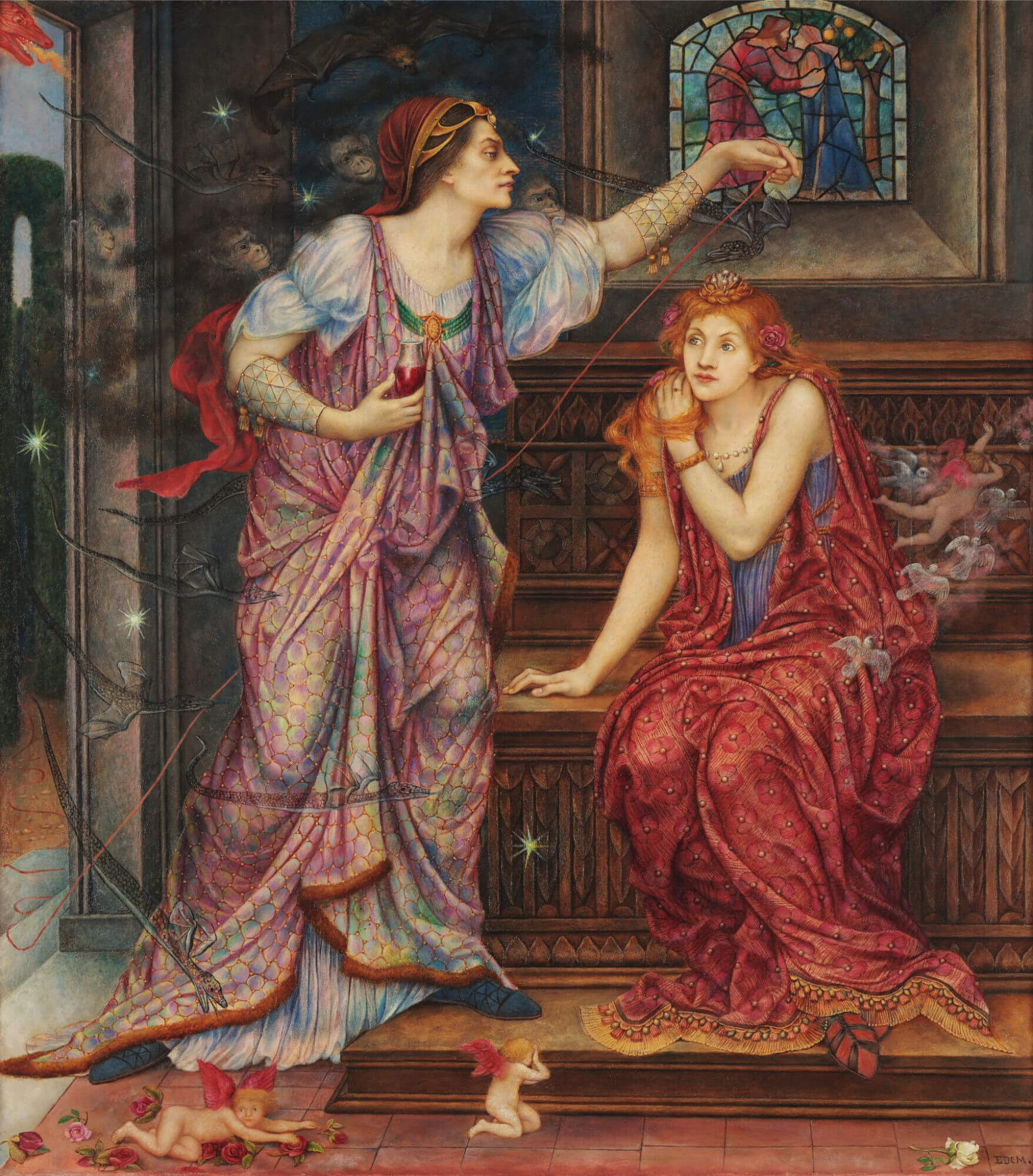
8. “Bad Blood” by Taylor Swift and “Queen Eleanor and Fair Rosamund” (c.1904) by Evelyn De Morgan
“Bad Blood” explores the theme of betrayal and a fractured friendship, suggesting a sense of conflict and unresolved issues.
Queen Eleanor KNEW her husband Henry II was having an affair. She followed his red thread through the maze in the gardens at their Woodstock home to find his mistress Rosamund. Queen Eleanor had such bad blood from this betrayal that she poisoned Rosamund.
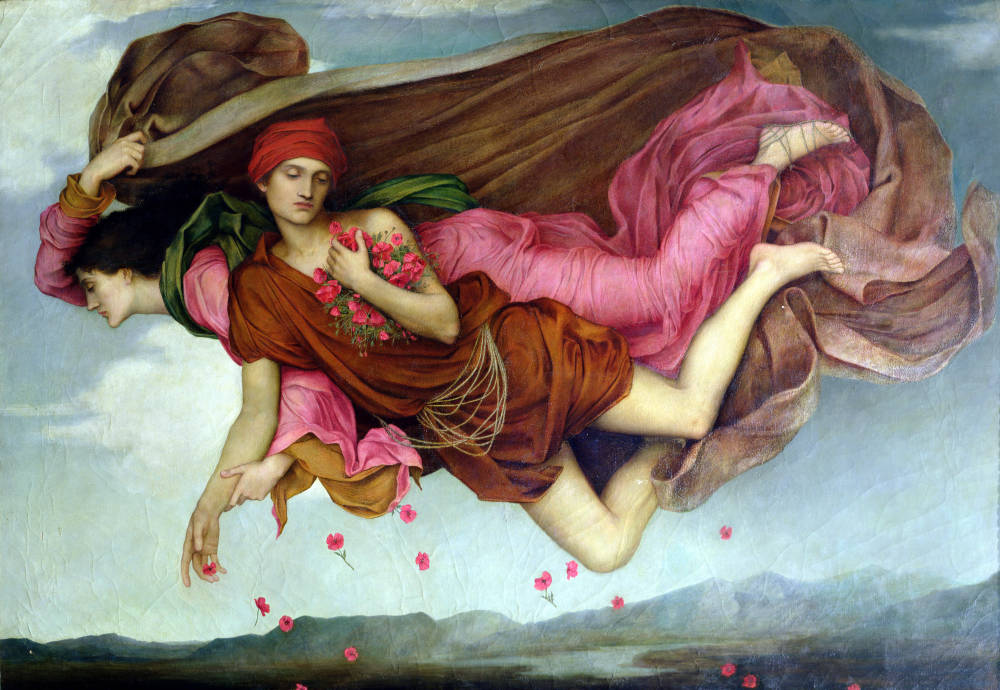
9. “Wildest Dreams” by Taylor Swift and “Night and Sleep” (1877) by Evelyn De Morgan
This song conveys a sense of nostalgia and longing for a love that might not last, evoking a sense of wistfulness. The most beautiful dreamscape in De Morgan’s oeuvre features the personified forms of night and sleep welcoming dreams from the world below.
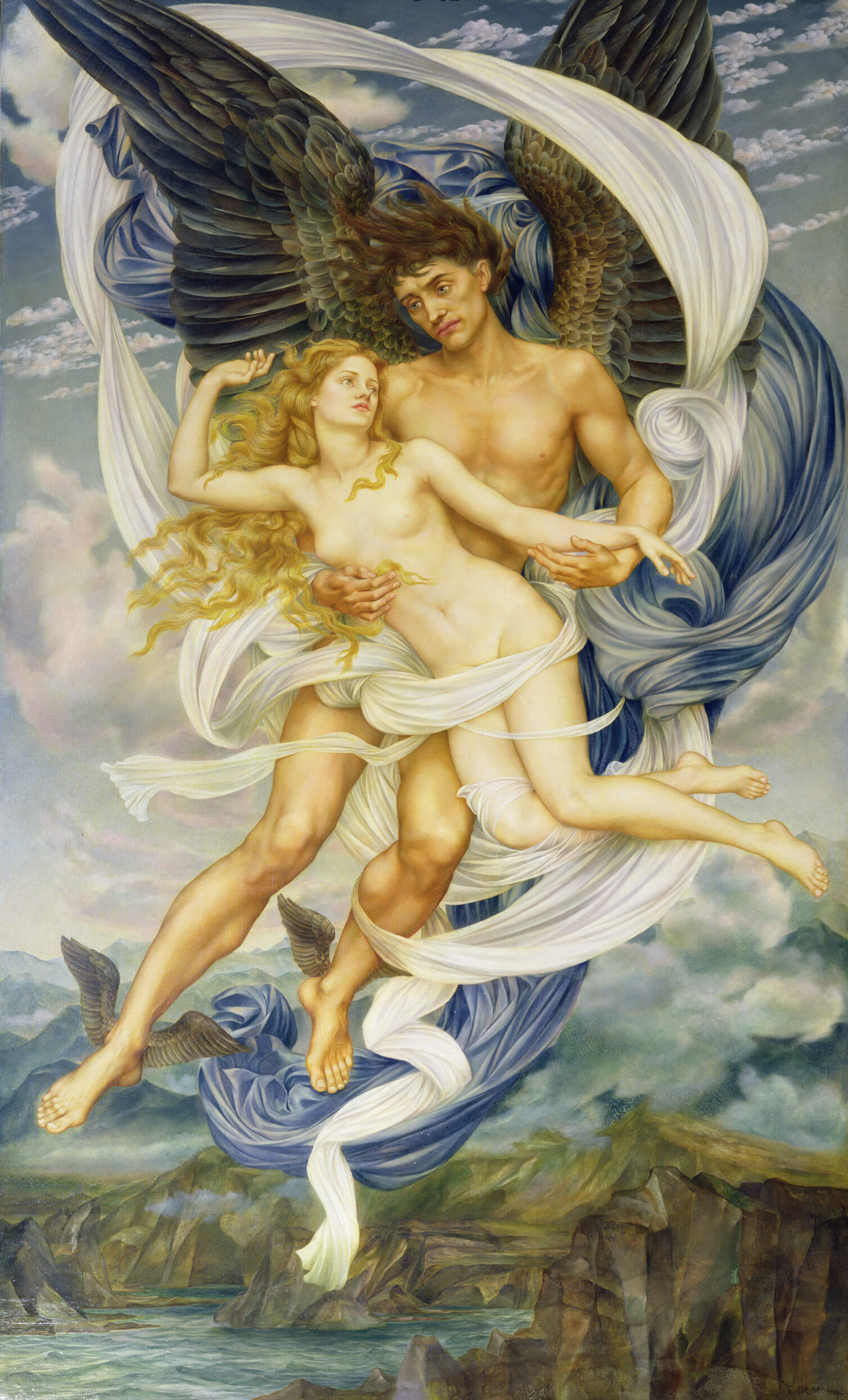
10. “How You Get The Girl” by Taylor Swift and “Boreas and Oreithyia” (1898) by Evelyn De Morgan
The song offers advice on how to win someone back, capturing the idea of the pursuit of a romantic interest. The God of the North Wind fancied this beautiful mortal girl and so he took her. Literally how you get the girl.
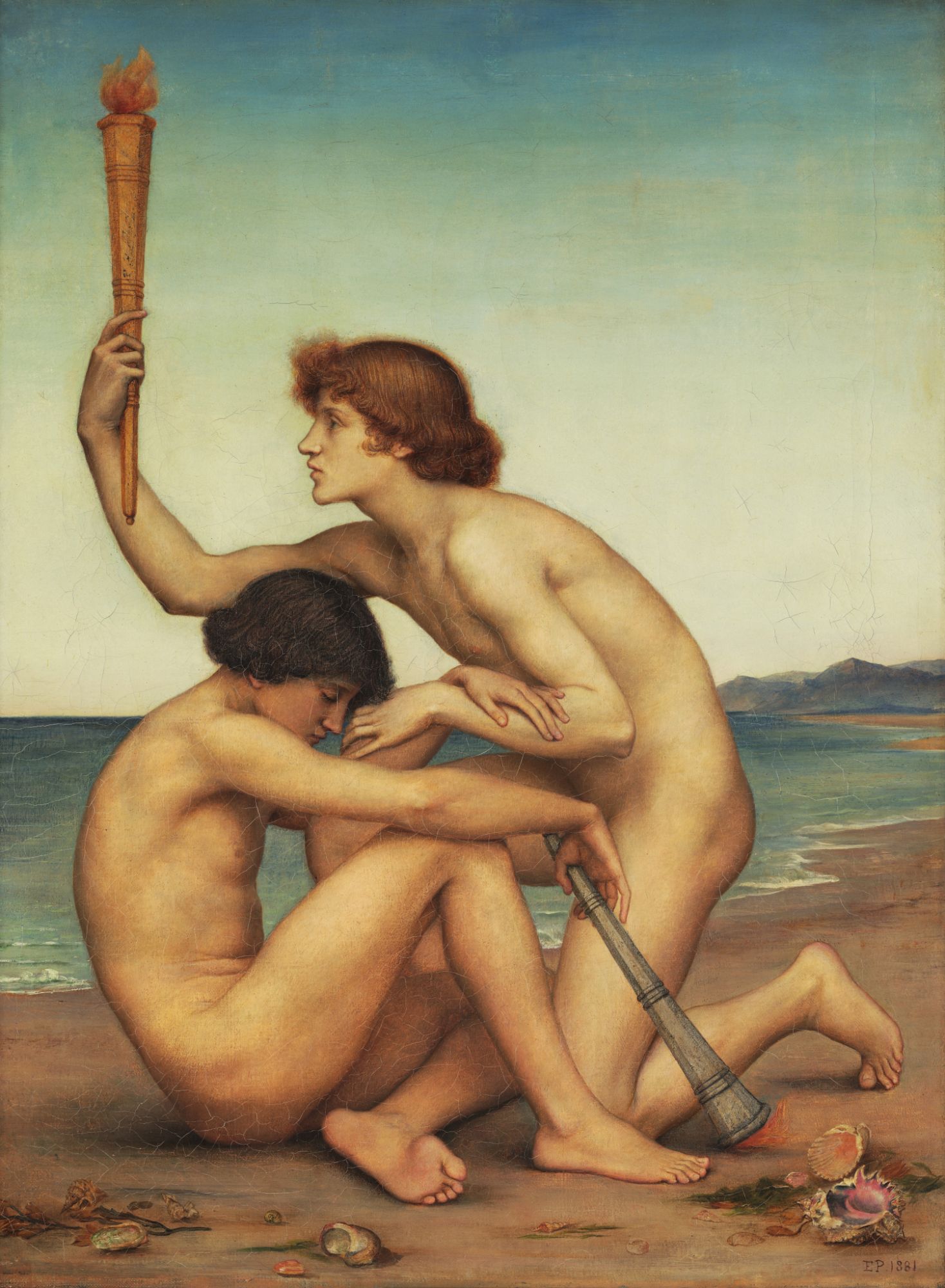
11. “This Love” by Taylor Swift and “Phosphorus and Hesperus” (1885) by Evelyn De Morgan
“This Love” discusses enduring love, acknowledging the beauty and strength of a deep, lasting connection. Locked in a loving embrace, the morning and evening star visualised as young athletic men in De Morgan’s painting, have such a deep connection that they work in perfect harmony to bring day and night.
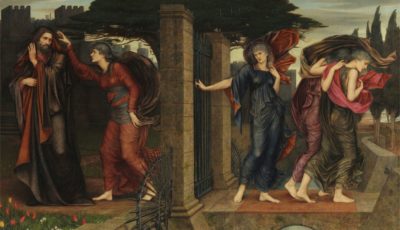
12. “I Know Places” by Taylor Swift and “The Grey Sisters” (1884) by Evelyn De Morgan
“I Know Places” explores secrecy and the desire to escape from prying eyes and judgment, particularly in a high-profile relationship. In this painting inspired by the German author Goete’s epic poem Faust, the title character has made a deal with the devil and he hides in his castle. The sisters visit him to cause anguish, but in the end only Care can get through to him- debt, want, and need are sent away. This painting shows the need to escape and to be loved and cared for away from the prying eyes which Taylor’s can bear.
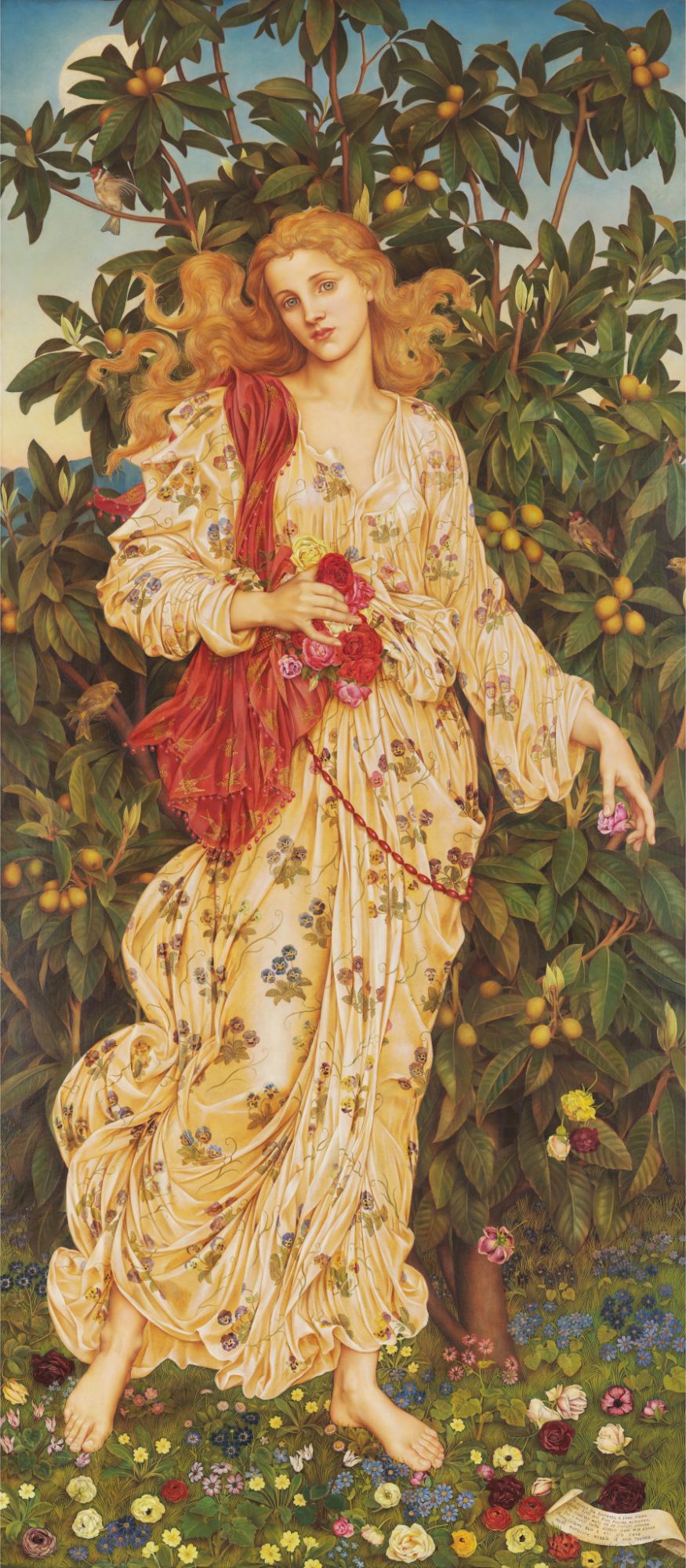
13. “Clean” by Taylor Swift and “Flora” (1894) by Evelyn De Morgan
“Clean” represents a sense of renewal and emotional healing after the end of a relationship, embodying the idea of moving on.
Flora, the goddess of Spring and flowers, welcomes rebirth and renewal and the new start Taylor welcomes in “Clean”
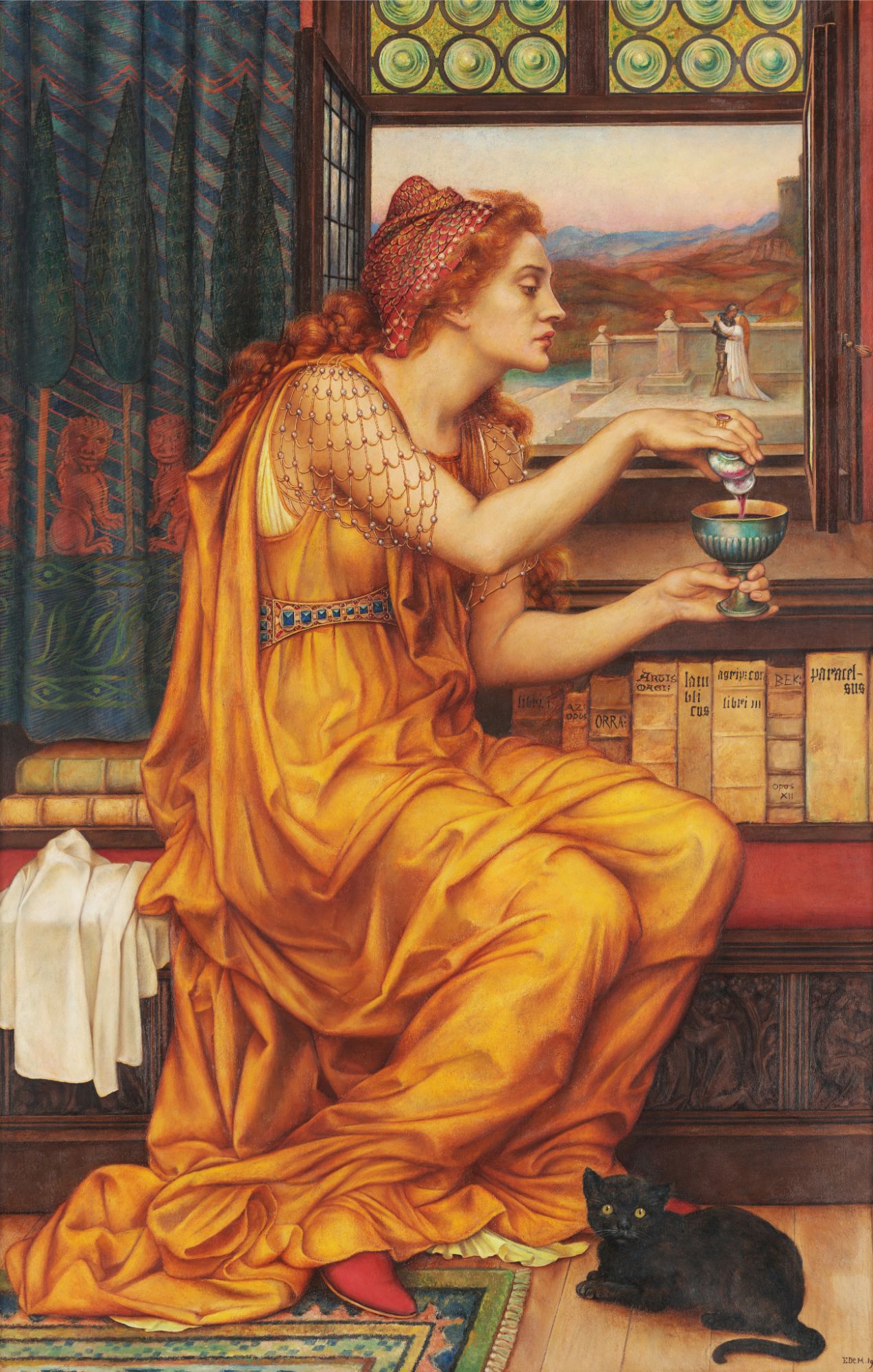
14. “Wonderland” by Taylor Swift and “The Love Potion” (1904) by Evelyn De Morgan
“Wonderland” delves into the concept of a fantastical, fleeting love that may not be as perfect as it seems. This fantasy painting by De Morgan shows a witch brewing up a wonderful love potion for the couple outside her window. In medieval costume, the witch has conjured a chivalric romance similar to that longed for in “Wonderland”
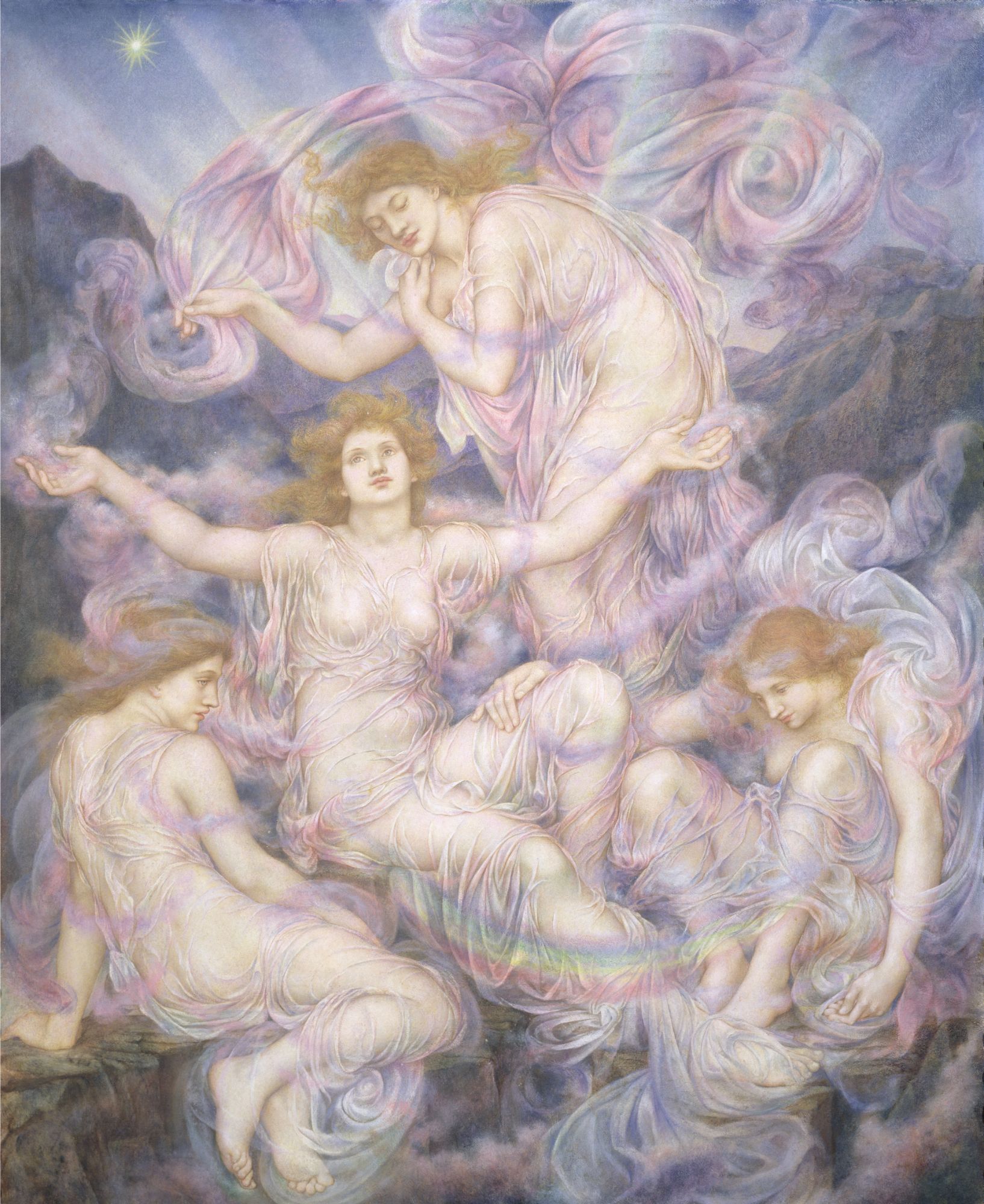
15. “You Are In Love” by Taylor Swift and “Daughters of the Mist” (c. 1910) by Evelyn De Morgan
This song celebrates the deep, authentic love between people, capturing the beauty of being truly in love. A celebration of love so strong it is bursting from you as we see in the rainbow mists of De Morgan’s painting.
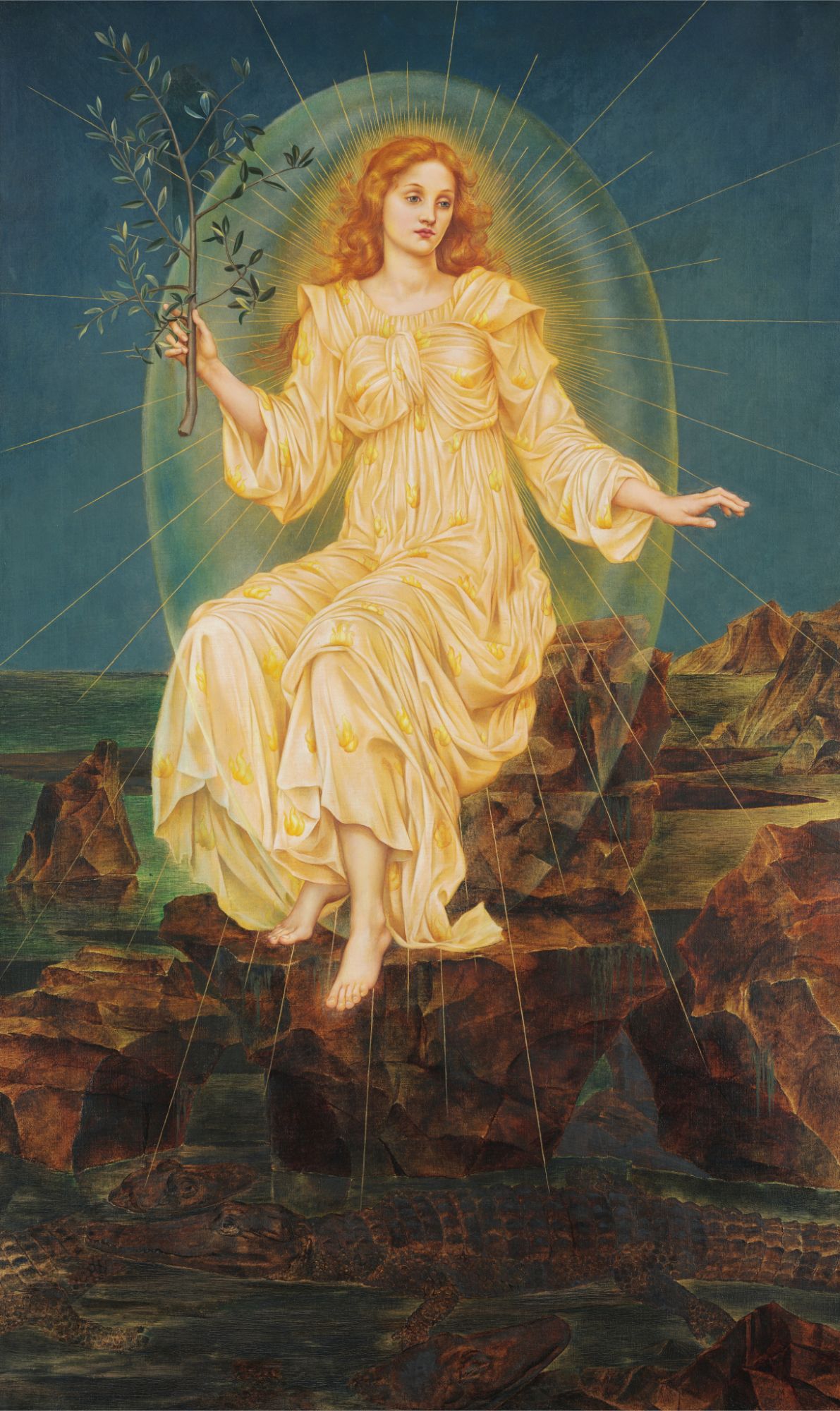
16. “New Romantics” by Taylor Swift and “Lux in Tenebris” (1895) by Evelyn De Morgan
“New Romantics” reflects on the carefree, exciting nature of modern love and relationships in a fast-paced world.
Bursting from the gloom, this iconic painting depicts light coming from the darkness. It gives a sense of hopeful new beginnings and optimism expressed in Taylor’s song.






